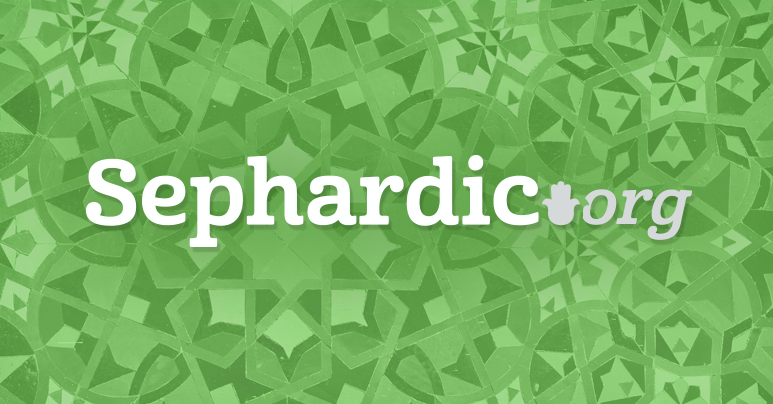
BALAQ - FROM ARAM AND ARAMAIC TO THE INTERFACE AT GIL’AD
The secrets of the Talmud can usually be found hidden away within its legal discussions and homiletical exegesis of the Torah. This does not hold true however with the secrets related to the life progressions of our Parasha’s antagonist Bil’am Ben Be’or. In an obvious reference to his soul transmigrations - Our Sages teach - Be’or is the same as Kushan Rishatayim and the same as Lavan HaArami - He was called Be’or because he copulated with a beast. He was called Kushan Rishatayim because he perpetrated two evils on Israel - one in the days of Yaaqov and one during the era of the Judges. 1 Scripture notes that they all stemmed from Aram Naharaim. Lavan as it is written - Eliezer made his way to Aram Naharaim ... Lavan ran towards the man. Bil’am as it is written - He hired against you Bil’am Ben Beor of Petor in Aram Naharaim. Kushan as it is written - And Hashem became incensed at Israel and surrendered them to Kushan Rishatayim King of Aram Naharaim. 2 We will elaborate on a few more incarnations of this soul as revealed to us by R. HaAri in addition to those noted above by the Talmud. We also hope to explore how the point of conflict - as originally detailed in Sefer Beresheet between all those related to this soul root and Israel takes place at the agreed upon contracted boundary of Gal’ed. This area or boundary is the interface between Holy and unholy - and is called Gal’ed in the Holy Hebrew language by Yaaqov but referred to by Lavan as Yegar Sahaduta (witness mound) in Aramaic. 3 This foreign language and it’s geographical region Aram - occupies a worthy position in the eyes of the Torah and Talmud. 4 It is a both a region and a language that contains sparks of holy souls and light that must be brought to the side of holiness. 5 The husks that are in possession of these sparks must be subdued at the region of Gil’ad - The spiritual control of this region is essential in releasing and bringing these sparks to the side of holiness.
ARAM AND ARAMAIC
The holy souls of at least Avraham, Sarah, Rivqa, Rahel and Leah were to be found in the region of Aram Naharaim. 6 Avraham and Sarah would have to find themselves, Eliezer would have to find Rivqa, and Yaaqov would have to work to obtain his wives from this area of Aram. Eleven of the twelve tribes were born there. Though it was an area steeped in magic and idolatry it was apparently a repository for holy souls. They all would be ultimately extracted from this region making their way to the Holy Land of Israel. The Megale Amuqot writes that Aram and its surroundings represented what the mystics call Qelipat Nogah - a “soft” husk with the tendency to allow sparks it captured to pass through it’s clutches towards the holy. 7 This is also true of the Targum written in the language of Aramaic. Each week we are to bring forth the sparks of holiness that are being held by the days of Hol - towards the Shabbat in the secret of Shenayim Miqra VeAhat Targum. 8 This is the rabbinic requirement to complete the reading of each verse of the weekly Parasha twice in Hebrew and once in the Aramaic Targum Onqelos. 9 It appears that this is also the secret behind that Talmudic ruling that the Aramaic words in the Torah might also be saved from fire on Shabbat. Telling us that within the language of Aramit - there are spiritual sparks that need to be elevated towards the holy. The Midrash teaches that the Aramaic language should not be taken lightly for it appears in the Torah. 10 This is a reference to exclusively the two Aramaic words used by Lavan. The Bavli adds that a Torah portion containing these words Yegar Sahaduta - might be saved from fire even at the expense of violating a rabbinic restriction of the Shabbat. 11
THE POINT OF CONFLICT - GIL’AD OR YEGAR SAHADUTA
We would like to propose a reason as to what prompted Balaq and Bil’am to attempt to curse Israel at all costs. According to the Torah the areas around Gil’ad were occupied by Og King of Bashan and Sihon King of Heshbon. Towards the end of Parashat Huqat it states that Israel struck Sihon down with the sword and occupied his land from Arnon to the Yabboq. 12 This was the tributary watering the plain of Sukkot in central Gil’ad or Peniel which parenthetically is the place where the name Israel was given to Yaaqov. 13 According to Sefer Yehoshua the region of Gil’ad was split at the Yabboq River. While the southern area was formerly occupied by Sihon - Moshe and Israel would have their next encounter with Og for its northern side. 14 Regarding the latter battle we are taught that Israel turned towards the Bashan or the northern region of the Gil’ad - and the Lord proceeded to give Og and his people into the hand of Israel. 15 The defeat of these kings who occupied the regions of Gil’ad leads us to appreciate the panic of Balaq at the start of our Parasha. Balaq according to the Midrash was also rooted in Aram as the verse notes that he sent emissaries to Bil’am to - the senders native land - Eres Bene Amo. 16 Hence we can now appreciate the fact that both of these antagonists as original Arameans felt threatened with Israel’s occupation of the interface at Gil’ad. As the verse clarifies - And Balaq saw all that Israel had done to Sihon and Og. They recognized that the lost spiritual control of this area will in turn prevent them who were rooted in Aram to suckle unauthorized holiness from Israel at the interface or Yegar - spelled Yud Gimmel Resh. 17 Parenthetically this interface is spiritually and numerically associated with the fourteen letter cryptogram that is found at the bottom of the obverse side of the Mezuzah. 18 The numerical value of this stone mound Yegar - set up by Yaaqov and Lavan is 213 and is synonymous numerically with that of Sihon Og which is also 213. 19 This idea concerning Yegar is hinted at in the verse Vayagor Moav Mipene HaAm Me’od - Simply translated that the Moabim became deathly afraid of Israel. The Qehilat Yaaqov teaches that we are to take notice of the expression Vayagor - spelled Vav Yud Gimmel Resh - namely that their fear waxed due to Israel’s control of the Yegar - after the wars with Sihon and Og. They would not be able to nourish from the interface as expressed in the divine names of fourteen letters. 20 In fact the verse concludes that the fear was due to Rav Hu - literally Israel being numerous. He teaches by way of Remez that the Torah willed to convey and reiterate in a coded manner that Israel now gained control over the Yegar which is again synonymous numerically with Rav Hu - or 213. 21 Bil’am proceeds and attempts to curse Israel - The Hizkuni and others teach that on his way he encountered the stone fence at Gal’ed that his donkey became aware of was Yegar Sahaduta the stone heap - he himself had set up in a prior incarnation as Lavan. His leg was squeezed into the heap to prevent him from proceeding as per his agreement with Yaaqov. 22 In each attempt he blesses in lieu of his attempted curses. This writes the Megale Amuqot was the divine plan to extract the blessings from Aram through the Qelipot Nogah prior to Israel’s entrance into the Holy Land. 23
DEATH AND REHABILITATION OF BI’LAM
Apparently during the war with Midyan - Bil’am had elevated himself towards the Kise HaKavod - to alleviate himself from the threat of Pinhas. 24 It was via the latter’s use of the holy Siss or Headplate (of the Kohen Gadol) - that Bil’am was brought down - 25 landing and according to at least one commentator being killed by the sword he set up in a prior incarnation as Lavan at Gal’ed. 26 It is admittedly hard to reconcile the view of R. HaAri that Bil’am had redeeming qualities - as he is counted in the Talmud as one who has no portion in the world to come. 27 According to Rav however - his death was apparently carried out in a Jewish court who sentenced him to four types of executions. This surely catapulted him towards a correction of his soul. 28 Additionally it is apparent from our Parasha that he did have another redeeming factor as was expressed in his request - let me die the death of the upright. He petitions that his post death existence be as that of the Patriarchs. 29 He concludes his request - let my end be like his. The Baal Haturim finds a Remez here in that the letters forming the name Bil’am - Bet, Lamed, Ayin, Mem are equal numerically with the end letters of the Patriarchs - Mem, Qauf, Bet. 30 R. HaAri teaches that his request was granted - Initially though transmigrating into an inanimate stone to atone for the sins committed with his mouth. 31 Then, as Naval whose letters Nun Bet Lamed also hint at an earlier reincarnation of his as Lavan which is also spelled using the same three latters Lamed Bet Num. At that time he was encouraged by David to provide the King and his warriors with food - so that he - Naval could somewhat rectify past transgressions. Instead he refused - 32 but still the Navi notes that he was ill for ten days and only then died . The Talmud teaches that he merited these additional days as he had indeed given the servants of David ten meals. Furthermore it is also apparent from the Talmud that these days were actually the Aseret Yeme Teshuva with Naval passing away on Mos’e Yom Kippour. 33 Another Talmudic source teaches that if one passes on Mos’e Yom Kippour it is considered a good sign for him. 34 Later this source soul became attached in the person of Barzilai HaGiladi - who rectified the fault of Naval and provided food for David and his warriors. He was a beloved of David - and we are told that he died on his bed. 35 R. HaAri teaches that his plea - Oot’hi Ahariit Kamohu - Let my end be like his -was finally fulfilled in Khimham the son of Barzilai whose letters parallel his request to be Kamohu - 36 as one who would finally accompany the King. While the rectification of this soul occurred at the interface - as he was called at the time HaGiladi - It was apparently only finalized with the accompaniment of his son Khimham with the King traversing from the interface and crossing the Jordan. As the verse confirms - The king crossed over to Gilgal and Khimham crossed over with him. 37
HISTORICAL FIGHT WITH ARAM TO CONTROL THE INTERFACE
It is clear from numerous readings from Sefer Shemuel, Sefer Melakhim and in other books of the Neviim that there continued serious contention for the interface at Gil’ad between Israel and Aram for generations. In fact it remained such a crucial spiritual access point that it was used by Abner - the general of King Shaul as the region to appoint Ish-Boshet as King of Israel. 38 It was later held in esteem by King David and was considered his capital during the rebellion of Avshalom. 39 The Arameans later gained the upper hand conquering Bashan or the northern region during the era of Ah’av King of Israel. 40 There was apparently a perpetual conflict between Aram and Israel at Ramot Gil’ad. At one point Aram was successful in expanding their boundaries to include this region. Aram - under the leadership of Haza’el towards the end of the reign of Yehu conquered both parts of the Gil’ad including its southern region. 41 Later on Aram became spiritually weakened allowing Israel to once again restore the area under its sovereignty. It is crucial to understand that these were not merely military advancements to conquer land but a reflection of Israel’s ability to control the all important spiritual interface.
THE INTERFACE AND ELIYAHU
According to another Midrash, Bil’am was killed by Pinhas. 42 It is therefore not a coincidence that Eliyahu who is related spiritually to Pinhas has his origins at that same interface - and is known as Eliyahu HaGiladi. 43 With its ultimate holiness in mind - Yaaqov opted to call the interface by using its form in Lashon HaQodesh naming it Gal’ed - in a manner that it will be exclusively holy. He preferred this in favor of Yegar Sahaduta - which in its Aramaic form considers it as a point of contention between the holy and unholy. Admittedly he likely realized that retrieving his lost vessel(s) at the Yabboq was destined to have both spiritual and physical ramifications at that point of contention. This is a reference to the Pakh or the pure jar of oil which was found by the Hashmonaim 213 years after the building of the second Bet HaMiqdash. The 213 being numerically equal to the Aramaic location of Yegar. 44 He had it hidden away until the time of miracle of Hanukkah which represents Israel’s control of the interface. 45 It will revert permanently to Israel with the coming of Eliyahu who will herald in the Mashiah - as a place exclusively holy - when the world will be elevated and there will no longer be contention between the forces of Aram and Israel. For even the land of Aram can then be a valid extension of the Holy Land. It will then be established as such beyond that which was attempted to by King David when he annexed Aram during his reign. 46 According to numerous sources in the Talmud - Eliyahu will clarify certain rulings. 47 This evidently means that he will bring to light all of the holiness inherent in the Torah and cast off any attachments of the unholy at Gil’ad. There will be no caravans exiting the interface of Gal’ed bringing our holy ones towards places of immortality. 48 Rather via our elevation of Aramaic thru our weekly Parasha preparation and other means - we will completely extract the sparks from the clutches of negativity. The former interface of Gal’ed will be exclusively Holy! Death will be swallowed up forever 49 and the righteous with the coming of Eliyahu will resurrect the dead. 50
Shabbat Shalom
Victor Bibi








